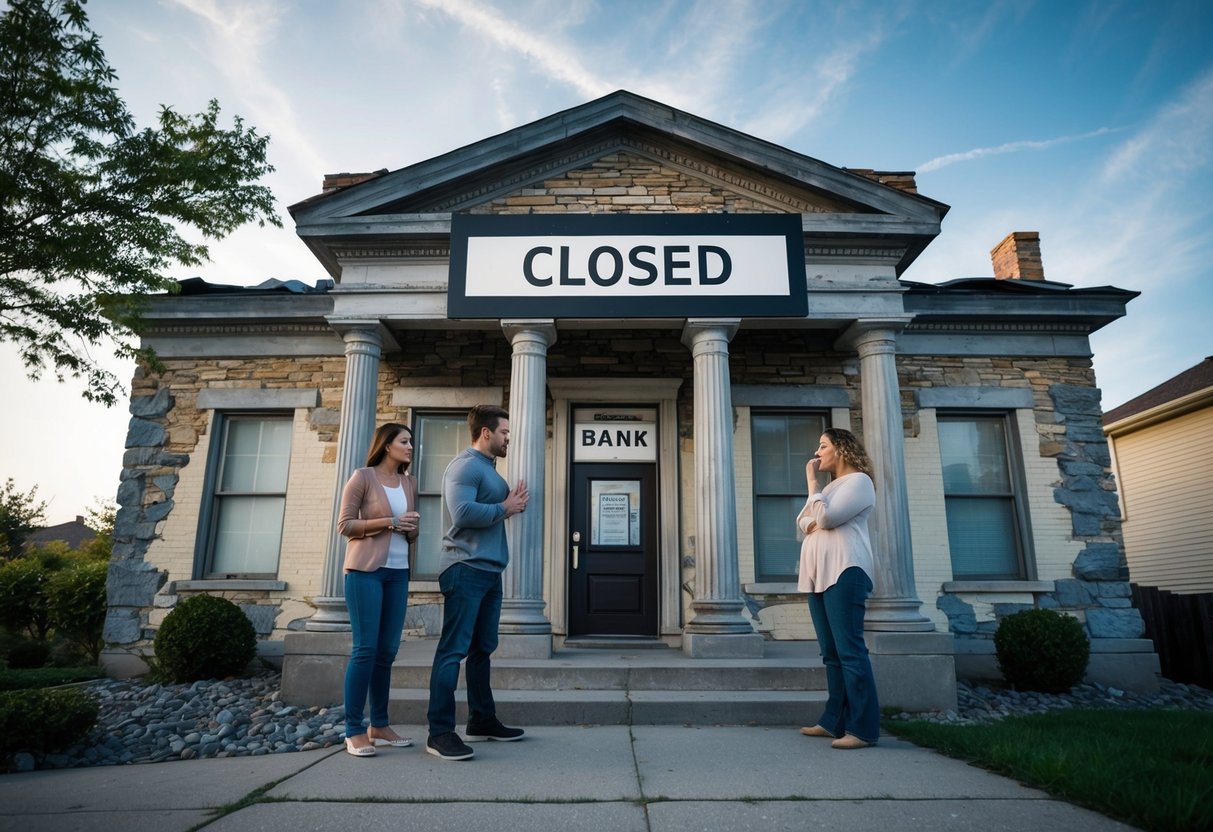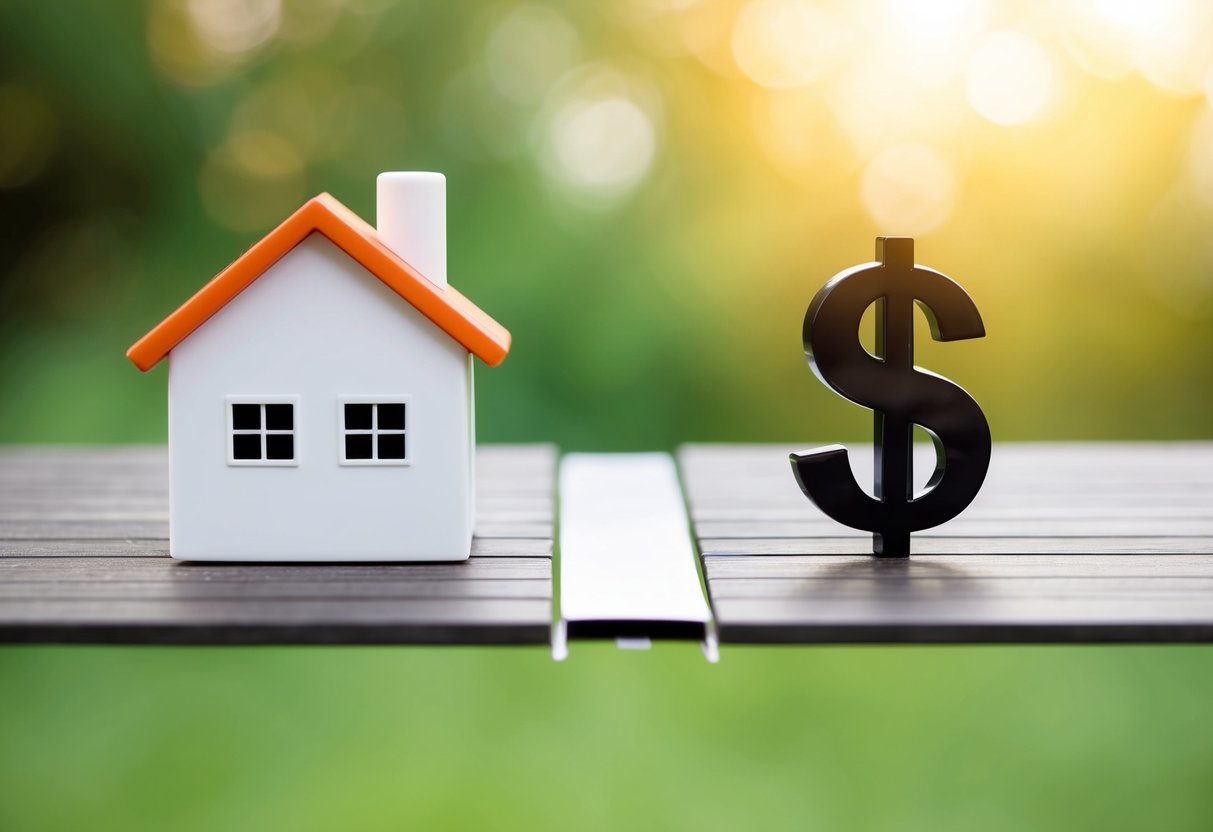Thinking about buying a second home is an exciting step, but it requires careful planning and consideration. The deposit required for a second property is usually around 20% to avoid Lenders Mortgage Insurance (LMI), which can save you significant money in the long run. You’ll need to have a thorough understanding of your finances, including your borrowing power and existing home loan repayments.

Location plays a crucial role in your decision-making process. Whether you’re looking for a vacation retreat or an investment property, the right location can greatly impact your potential rental income and property value. Do thorough research on market trends and property valuations in your desired area to make an informed choice.
Managing the associated costs, such as legal fees, insurance, and potential taxes, is just as important. Make sure to budget for these, alongside your deposit, to avoid any financial surprises. Additionally, if you’re planning to rent out your second home, consider the responsibilities of rental management and tenant relations to ensure a smooth experience.
Key Takeaways
- A 20% deposit can help you avoid Lenders Mortgage Insurance (LMI).
- Location significantly impacts rental income and property value.
- Budget for all associated costs, including legal fees and taxes.
Understanding the Basics of Buying a Second Home

Owning a second home can provide both personal enjoyment and financial benefits. Knowing the different types of second properties available, assessing your financial situation, and understanding the role of investment strategy are key steps in this process.
Types of Second Properties
The choice of a second home largely depends on your goals. Holiday homes are popular for those looking for a retreat. These are often located in scenic areas or near beaches. Investment properties are bought with the aim of generating rental income. These can be long-term rentals or short-term holiday rentals.
Primary residences are exempt from certain taxes, but second homes might not receive the same benefits. Secondary residences can include city apartments used for work-related purposes or visits.
Choosing the right type depends on your lifestyle and financial goals. Make sure to research thoroughly to find a property that meets your needs.
Assessing Your Financial Situation
Before you buy a second home, it’s crucial to evaluate your financial situation. You need to determine if you can afford the purchase without endangering your primary residence. One way to do this is by reviewing your income, expenses, and existing debts.
A second home usually requires at least a 10% deposit. To avoid paying Lenders Mortgage Insurance (LMI), you might need a 20% deposit. It’s also essential to consider additional costs such as property taxes, maintenance fees, and insurance.
If your second home is an investment property, consider how rental income might affect your financial picture. Make sure you can cover the mortgage payments even during times when the property is unoccupied.
The Role of Investment Strategy
An effective investment strategy helps you make the most out of your second home. First, identify whether your goal is capital growth or rental income. If you are buying for capital growth, look for properties in areas with potential for value increase.
For rental income, calculate the expected rental yield. This involves assessing the rent you could earn versus the costs of owning the property.
Also, be aware of tax implications. Rental income is taxable, and you might be liable for capital gains tax when selling the property. Deducting property-related expenses can help reduce your taxable income.
Consulting with a financial advisor or property expert can provide further insights to enhance your investment strategy effectively. Ensure your decisions align with your broader financial goals.
Financing Your Second Home Purchase

When buying a second home, financing options become crucial. You’ll need to understand how home loans work, what lenders offer, and how interest rates and Lenders Mortgage Insurance (LMI) could impact your purchase.
Understanding Home Loans and Mortgages
A home loan, or mortgage, is money borrowed to buy property. Your borrowing power, or how much you can borrow, is based on your income, debts, and expenses.
The process is similar to getting your first home loan. You’ll need a deposit, often at least 10% of the property’s value, but to avoid LMI, you’ll want a 20% deposit. Evaluating your current mortgage repayments is essential to ensure financial stability.
Examining Lenders and Loan Options
Different lenders offer various loan types. Research is key to finding one that suits your needs. You can approach banks, credit unions, or mortgage brokers.
Compare options like fixed-rate loans (interest rate stays the same) and variable-rate loans (interest rate can change). Redraw facilities, offset accounts, and interest-only loans may also be considered. Speaking with a Mobile Lending Manager can provide personalised advice and options tailored to your situation.
Interest Rates and Their Effects
Interest rates matter because they affect monthly repayments and the total cost of the loan. Fixed rates give stability but may be higher than initial variable rates. Variable rates can be lower initially but fluctuate, impacting your repayments.
Consider the current economic climate in Australia and consult your lender to understand how rate changes may affect your budget. Use calculators to estimate future repayments based on different interest rates scenarios.
The Relevance of Lenders Mortgage Insurance (LMI)
LMI protects the lender if you can’t repay your loan and is required if your deposit is less than 20%. This insurance increases your borrowing costs.
To avoid paying LMI, try to save a 20% deposit. If that’s not possible, consider the cost of LMI in your financial planning. Know that the LMI premium can be added to your home loan amount, which means you’ll pay interest on it, increasing your overall cost.
The Importance of Location and Market Valuation

When buying a second home, paying attention to location and market valuation is crucial. Properly evaluating these factors can significantly impact your investment’s success and long-term growth.
Selecting the Right Location
Choosing the right location is vital for your second property. Focus on areas with high rental demand or potential for capital growth. Proximity to amenities such as schools, shops, and public transport can increase a property’s value. Look for neighbourhoods with low crime rates and good infrastructure.
Research is essential. Investigate city development plans and future projects that might enhance the area. Location can also affect the type of tenants you attract, so assess what kind of renters potential locations cater to. For example, families usually prefer areas with good schools.
Evaluating Market Value and Developments
Market value is another critical factor. Start by comparing similar properties in the area to understand the going rates. Look for trends in property prices over recent years to gauge stability and growth potential. High demand areas often show steady price increases.
Future developments can affect market value. Planned infrastructure projects, like new transport links or shopping centres, can drive up property values. Be aware of any upcoming changes that might affect the area’s desirability. Always get a professional valuation before making a purchase.
Budgeting for a Second Property
When buying a second property, consider your overall budget, think about ongoing expenses, and plan for improvements. Also, evaluate potential rental income to offset costs.
Calculating Expenses and Cash Flow
Creating a budget starts with listing all costs. These include the deposit (usually at least 10%, but aiming for 20% helps you avoid Lenders Mortgage Insurance).
Monthly repayments on your loan should be factored into your cash flow. Don’t forget property taxes, insurance, and utilities. These need to be added to your monthly outlays.
Look closely at your total income versus expenditures. If the numbers are tight, it might be prudent to reconsider the scale of the second property.
Factoring in Maintenance and Upgrades
Maintenance isn’t just a one-time expense. Regular maintenance costs (like gardening, cleaning, and minor repairs) should be part of your budget.
Plan for unexpected repairs, such as fixing a leaky roof or broken heater.
Upgrades, while more sporadic, can add value to your home. These might include kitchen remodels, new floors, or adding energy-efficient windows. Preparing for these costs prevents future financial strain.
Rental Income Considerations
If you plan to rent out your second property, consider the potential income. Research the rental market in the area to estimate your returns.
Factor in periods when the property might be vacant and ensure you have savings to cover costs during these times.
Don’t forget management fees if you hire a property manager, as well as maintenance responsibilities that could eat into your rental income.
Accurately projecting these incomes and expenses helps create a realistic budget.
Assessing Additional Costs and Tax Implications

When buying a second home, you need to consider additional costs and understand tax implications. These financial aspects are crucial to prevent surprises and ensure a smooth purchasing process.
Stamp Duty and Other Purchase Costs
Stamp duty is one of the significant upfront costs. The amount you’ll pay depends on the property’s value and the state or territory where it’s located. For example, in New South Wales, rates can range from 1.25% to over 5.5%. You should use an online stamp duty calculator to get an estimate.
Other purchase costs include legal fees, inspection costs, and possibly Lender’s Mortgage Insurance (LMI). Legal fees for conveyancing can vary but expect $800 to $2,000. Property inspection fees typically range from $300 to $700, ensuring your new home is structurally sound. If your deposit is less than 20%, lenders may require LMI, which can be a significant cost.
Tax Considerations for Property Investors
Tax implications can greatly affect your investment’s profitability. If you rent out your second home, rental income is taxable. You may also be eligible for deductions on expenses like maintenance, property management fees, and insurance.
Capital Gains Tax (CGT) applies when you sell your property. The capital gain is the difference between your purchase price and the sale price. If held for over a year, you could get a 50% CGT discount.
Negative gearing allows you to deduct losses if your rental income is less than your expenses. This can offset your taxable income, providing tax relief.
Ensure that you consult with a tax professional for personalised advice and stay compliant with Australian tax laws.
Rental Management and Tenant Relations

Managing a rental property involves securing trustworthy tenants and ensuring your property generates a steady rental yield. This section will help you navigate these important aspects.
Securing and Managing Tenants
Finding reliable tenants is crucial for maintaining steady rental income. Start with thorough tenant screening. Check credit histories, employment status, and rental references. Conduct personal interviews and look for any red flags like frequent moves or missed payments.
After securing tenants, manage the relationship through clear communication and well-defined lease agreements. Spell out responsibilities and expectations upfront. Use property management software to track rent payments, maintenance requests, and lease renewals. Regular inspections help identify issues early, ensuring your property remains in good condition.
Legal compliance is also key. Understand tenant rights and your obligations as a landlord to avoid disputes. Knowledge of local laws helps maintain a positive and lawful rental experience.
Understanding Rental Yields
Rental yield measures the return on investment from rental income. To calculate it, divide annual rental income by the property’s purchase price and multiply by 100. For example, if your property earns $20,000 per year and cost $400,000, the rental yield is 5%.
High rental yields are desirable, but consider ongoing costs like maintenance, insurance, taxes, and vacancy periods. Use gross yield for a broad view and net yield for a more precise picture after expenses.
Market research is critical. Compare rental yields in similar areas to ensure your property performs well. Engage with a property manager or financial advisor to refine your understanding and maximise returns. This helps you make informed decisions and grow your investment effectively.
Strategies for Repayment and Refinancing
When buying a second home, focusing on your repayment options and refinancing strategies is crucial. You can explore refinancing to improve your loan conditions and use offset accounts and savings to manage your financial responsibilities effectively.
Exploring Refinancing Options
Refinancing your home loan may help you get a better interest rate or more favourable terms. By obtaining a lower interest rate, your monthly repayments might decrease, making it easier to manage. When refinancing, it’s essential to consider your current borrowing power, as it determines how much you can refinance.
One viable option is a home equity loan, which allows you to borrow against the equity in your existing property. Another choice is a line of credit, offering flexibility as you only pay interest on the amount you borrow. If you’re managing two properties simultaneously, a bridging loan can provide temporary funding until your first home sells.
Utilising Offset Accounts and Savings
An offset account links to your home loan, and the balance in this account offsets the interest payable on your loan. For example, if you have a $300,000 loan and $50,000 in your offset account, you’ll only pay interest on $250,000. This can save a significant amount in interest over the life of your loan.
Building up savings can also increase your financial security. Regularly depositing extra funds into your offset account not only reduces your loan balance but also shortens your loan term. Consider setting up automatic transfers to ensure consistent savings without needing to remember each month.
Careful management of your finances with these strategies can make owning and repaying a second home more manageable.
Long-Term Considerations for Property Investors

When buying a second home, it’s important to think about long-term aspects such as building a property portfolio and planning for retirement.
Building a Property Portfolio
Developing a property portfolio involves strategic planning and patience. Diversifying the types of properties you own, like residential and commercial, can help balance risk and reward. Look at historical property value trends to make informed decisions.
Consider consulting a financial expert to align your investment strategy with your retirement goals. Regularly reviewing market conditions and adjusting your plans is key to maximising the returns on your investment.
Managing and maintaining your properties efficiently can impact your returns. It’s wise to stay updated on the local market and keep an eye on potential new investments. Your privacy policy should also protect your tenants’ information, ensuring trustworthiness.
Choosing the Right Professionals to Support Your Purchase

Finding the right professionals can ease the process of buying a second home. You’ll need to collaborate with real estate agents and financial experts who can guide you through each stage.
Working with Real Estate Agents
Real estate agents play a vital role in finding your second home. They help identify properties that fit your criteria, such as location, size, and budget. An agent can also provide insights about local market trends.
You should choose an agent familiar with the area you’re interested in. Look for experience and good communication skills. Make sure they are a member of a recognised real estate institute, which often ensures higher standards of professional conduct.
Financial Experts and Lending Specialists
Financial experts and lending specialists can help you navigate the financial aspects of buying a second home. They can assist with securing a mortgage and advise on financial products that suit your needs.
A lending specialist may help you refinance your existing home loan to access equity. A financial expert can provide advice on managing capital gains tax and other tax implications. Collaborating with these professionals ensures you’re making informed financial decisions.
Frequently Asked Questions
When buying a second home in Australia, it’s important to understand the financial and tax implications, deposit requirements, and potential benefits available to you.
How can one purchase an investment property with minimal upfront capital?
You can explore options like utilising equity from your existing property or considering lower deposit home loans. Certain lenders might offer favourable terms for investment properties.
What are the implications of tax when acquiring an additional property in Australia?
Purchasing another property may have tax implications including capital gains tax, land tax, and changes to your tax deductions. It’s advised to consult with a tax advisor to understand how these factors may affect your finances.
What is the typical deposit requirement for purchasing a subsequent residence?
Typically, lenders require at least a 10% deposit for a second home. To avoid Lenders Mortgage Insurance (LMI), a 20% deposit is recommended. This can be drawn from savings or leveraged equity from your existing home.
Is it possible to buy a second property while maintaining a current mortgage?
Yes, it is possible. Lenders will assess your financial situation to ensure you can manage repayments on both properties. This may include reviewing your income, expenses, and overall debt levels.
How can one utilise equity from an existing property to finance another purchase?
You can use the equity in your current home as security to obtain a loan for your second property. For instance, if your home is worth $900,000 and you owe $500,000, you have $400,000 in equity, part of which can be utilised.
What incentives or grants are available for second home buyers in Australia?
Second home buyers may not be eligible for first-time buyer grants. However, some states offer other incentives like discounts on stamp duty or grants for specialised types of property purchases. Check with local state government programs for specific opportunities.





